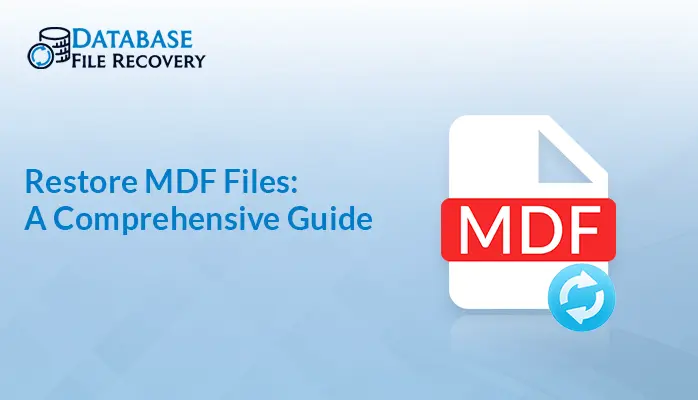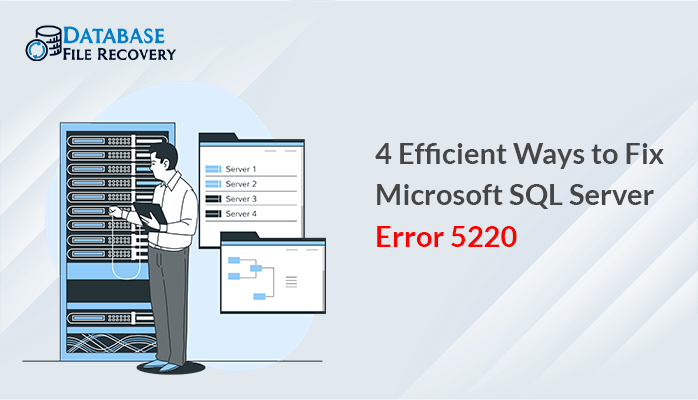-
Written By Robert Scott
-
Updated on August 20th, 2024
How Can You Retrieve Deleted Records in SQL Server Database?
Summary: Retrieving deleted records in SQL Server is very significant for database users who lose their deleted database records accidentally. Recovering deleted records is not as difficult as the users think. It becomes convenient for the users if they follow the right methods. Thus, in this blog, we will get to know about various methods to recover deleted records in SQL servers. Also, you will understand the manual techniques and professional SQL Database Recovery Software.
Download Now Purchase Now
An Intro to SQL Server
SQL Server, better known as Microsoft SQL Server is a relational database management system where SQL stands for Structured Query Language. It is a software product developed by Microsoft, that stores and retrieves data as per other software applications request. SQL server uses a client-server model to store and retrieve data.
How to Check Database Deleted in SQL Server?
You can check and then recover database deleted records in the SQL Server by following the right step. In this section, we will figure out a manual and a professional approach.
Rollback Deleted Records in SQL With Log Sequence Number
There are numerous steps involved to recover deleted records in SQL Server with the log sequence number:
Step 1:Create A Database
Run the below command to create a database:
Step 2: Insert Your Data Into Tables. Here is the code to insert the data into the table:
Step 3: Now, delete the rows from the table by running the following command:
Step 4: Next, get accurate information about deleted rows by searching for the transaction log by running the following command:
Step 5: Further, get the log sequence number of the LOP_BEGIN_XACT log record. Here is the command:
Step 6: Now, recover the deleted records by converting the LSN value from hexadecimal to decimal. So add 0x before the log sequence number.
Step 7: Finally, the SQL server restore deleted records. Now, it is important to check whether the deleted records have been recovered or not. Run the following command to check whether the tables were deleted or not:
Limitations of Using Manual Method
Here are some of the limitations mentioned of using the manual method:
- Tech knowledge is a must for using this method.
- The process is quite lengthy and time-consuming.
- Also. it needs more effort than an automated tool.
- Your output can’t always be accurate.
- Some users get too complicated while using this method.
Recover Deleted Records in SQL Server Easily- Use Automated Tool
With SQL Database Recovery Software, you can conveniently recover all kinds of deleted records in SQL Server. Along with deleted records, it also recovers stored procedures, triggers, functions, defaults, etc. This tool also fixes corrupted and damaged database files from almost all the versions of the SQL server. It offers the preview option once the scanning process is done. Furthermore, this wizard offers wide compatibility with different versions of Windows OS and SQL Servers.
Steps to Retrieve Deleted Records in SQL Server Database
Below are the steps for the SQL server find deleted records:
- First of all, install and run the recovery tool on your PC.
- Next, select the Open button and then choose a desired MDF file.
- Further, pick a Recovery Mode and a collation option.
- Later, hit the OK button, and the scanning process will begin.
- Once the scanning process is done, click on OK.
- Now, choose a desired folder, and finally hit the Save Records Table option.
To Summarize
You can either manually or professionally recover deleted records in SQL Server. Both the manual method a professional tool have their benefits. Thus, use any of the methods according to your needs and which fits you better. In this article, we have given a brief intro to both methods. Thus, read the full blog to know them even better.
Frequently Asked Questions(FAQ)
Q1. Is it possible to undo the command to get back deleted records in SQL DB?
Ans: Yes by using the SQL Database Recovery software you can recover deleted records in SQL Server by following some simple steps:
1. First of all, install and run the SQL Database Recovery tool on your PC.
2. Next, select the Open button and then choose a desired MDF file.
3. Further, pick a recovery mode and a collation option.
4. Later, hit the OK button, and the scanning process will begin.
5. Once the scanning process is done, click on OK.
6. Now, choose a desired folder, and finally hit the Save Records Table option.
Q. Can we recover deleted tables & triggers also with the automated tool?
Ans: Yes you can delete tables and triggers by using the dedicated recovery tool. You can’t just recover deleted tables and triggers but also delete records, functions, and programmability.
About The Author:
With more than five years of experience in email migration, Data Recovery, Email Backup, and File Management, I combine my years of experience with a strong interest in new technology. My professional journey is fueled by a genuine passion for navigating and mastering the latest advancements in these fields, ensuring that I stay ahead of the curve and bring innovative solutions to the table.
Related Post


